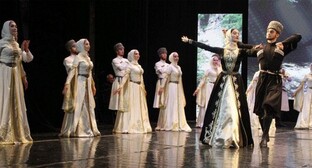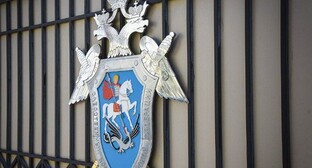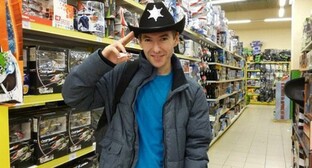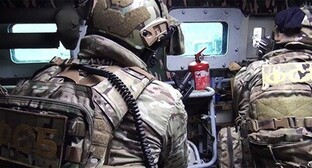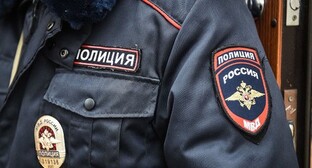30 May 2003, 20:30
Nogais
They call themselves nogai (in connection with the name of Nogai - the Golden horde ruler of the 13th century). Nowadays Nogais mainly live in the North Caucasus and in Dagestan: in the Nogai steppe (between the rivers Kuma and Terek), at the Kuban and in the Astrakhan district. A big number of Nogais lives in Romania and Bulgaria (Dobruja), Turkey and the other countries. Their population in the Russian Federation is 73,7 thousand people (in 1985 - 65 thousand).
The main sub-ethnic groups: Karanogais (Dagestan), Nogais themselves or achikulak Nogais (Stavropol territory), Aknogais or the Kuban Nogais (Karachaevo-Cherkesskaya Republic), and the Astrakhan Nogais. They belong to the South Siberian (Turan) transition race. They speak Nogai language of Kupchak sub-group of the Turk group of Altai branch. Dialects: Aknogai, Karanogai, Nogai itself (considered to be a kind of Karanogai). The literary language is based on Karanogai and Nogai dialects. Literacy is based on Russian alphabet. Nogai believers are Moslems-sunnites.
The ancestors of the Nogais are the tribes that spoke Turk and Mongolian languages, got mixed with Kupchaks that spoke Turk language and took their language. They lead nomadic life between the rivers Danube and Irtish (including the lower Volga region, the North Caucasus, the Crimea). First they were the Nogai Horde, after its collapse - Big Nogai, Small Nogai, Yedisan, Yedishkul, Yemboiluk and Bujak Hordes.
In the past the main traditional occupation was nomadic and distant-pasture cattle-breeding (sheep, goats, cattle), breeding camels and horses. Kuban and Achikulak Nogais were a bit involved in agriculture (millet, barley, wheat). The most common trades were making broadcloth, processing leather and sheepskin, making felt to produce burkas, boots, boots, headgear.
The major part of Nogais didnТt have permanent settlements, some made permanent structures for living and the household for the wintertime, with time they became villages (auls). Traditional type of the dwelling of the nomadic Nogais was a tent (yurta) - big collapsible (terme) and small non-collapsible, portable (otav). Settled Nogais often lived in earthen houses (yerme kuazi); they also grasped the traditions of house-building of the neighbor nations of the North Caucasus and local Russian population.
They used an open hearth to heat the tent and cook the food, in the permanent dwellings they had a fireplace by the wall; iron stoves started to appear in the beginning of the 20th century.
The food of the Nogai was sour milk, sour cream, airan, cottage cheese, butter, cheese, Kalmik tea (8 different kinds), they made koumiss out of horse and camel milk. They made meat dishes of horse meat, mutton, beef, camel meat; ate poultry and fish. They made thick porridge of millet flour that sometimes replaced bread; they baked bread of flat round form out of millet and wheat flour.
Traditional costume of the Nogais of the north Caucasus is similar to that of the North Caucasus nations. Men wore a shirt, trousers, beshmet, the upper clothes were cherkeska, burka, fur coat; the head gear was papakha, bashlik. The female costume included a shirt, trousers, beshmet (single-back overcoat), long single-back dress, kerchiefs, hats made of fur and fabric decorated with applique work; in winter they wore fur-coats. The footwear (high boots, boots, charuki etc.) were made of felt, leather, morocco.
In the Nogai Horde the typical relations were feudal-patriarchal. The social top of the Nogai society were bijs, murzas, sultans, kaibashi (petty nobility), the clergy; the feudally dependent categories were the peasants - personally free and serfs; home serfs were a separate category. There survived some remnants of the clan and tribe division, clan and neighbor mutual help, vendetta, hospitality, alatuchestvo. In the 19th century most of the Nogais had nucleus families of patriarchal kind: the younger obeyed the older, women obeyed men. The most difficult was the position of the daughter-in-law. Before the birth of the child she had no right to open her face, to talk to her father-in-law, mother-in-law and the elder brothers of the husband. The marriage took place on the decision of the parents, with the payment of the ransom; the betrothal of children was common.
In 1920-ies Nogais switched to settlement, their economy and culture changed a lot.
